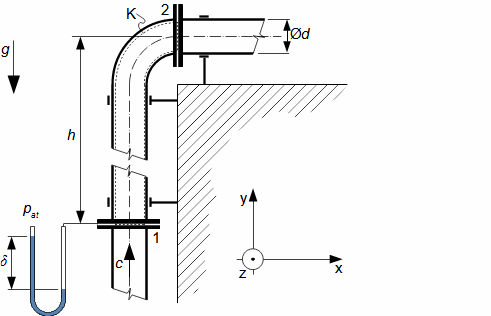Equation for calculating forces acting on machine surfaces from fluid flow
The forces acting from the fluid flow on the machine surfaces can be determined from the momentum change theorem. Its special form is also used to calculate the forces acting on the blades in the blade row from the fluid flow, a classical problem in turbomachinery.
Theorem of momentum change
Control volume
Pressure forces
Weight
Force from bodies
The forces acting from the fluid flow on the machine surfaces can be determined from the momentum change theorem (Newton's second law). According to the momentum change theorem, the change in fluid momentum over time is equal to the sum of the external forces acting on the fluid in the control volume. In the case of applying this law to a fluid enclosed in a control volume VC (Figure 1), the external forces considered are: the pressure forces from the surrounding fluid at the boundaries of the control volume Fp, the weight of the fluid in the control volume Fh, and the forces exerted by the bodies inside and at the boundaries of the control volume Fb. The change in momentum of the fluid inside the control volume is also equal to the difference of the product of velocity and mass flow between the inlet and outlet of the control volume [Bathie, 1984], [Kadrnožka 2003].

















